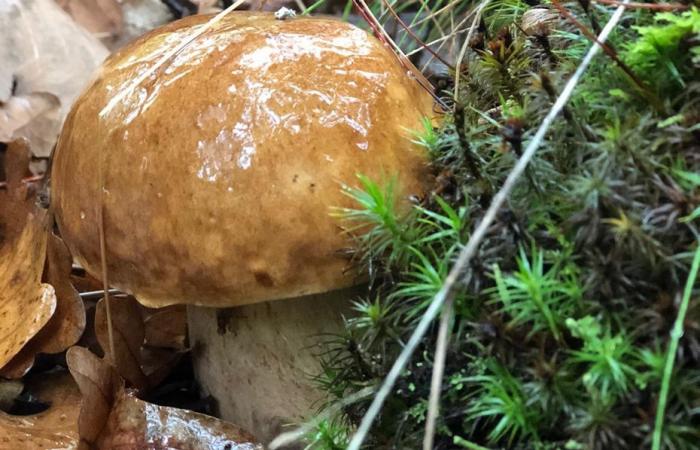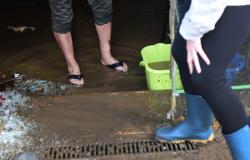
Among the little pleasures of autumn is picking mushrooms. And thanks to the rain in recent months, 2024 should be a good year for mycophiles. Where are the best places to find them and what precautions should you take? We tell you everything.
The essentials of the day: our exclusive selection
Every day, our editorial team reserves the best regional news for you. A selection just for you, to stay in touch with your regions.
France Télévisions uses your email address to send you the newsletter “The essentials of the day: our exclusive selection”. You can unsubscribe at any time via the link at the bottom of this newsletter. Our privacy policy
With 23% of its territory covered by forests, the Centre-Val de Loire region ranks 6 th rank of the most wooded regions of France. So many relatively secret places where it is possible to indulge in mushroom picking.
Mushroom picking is a great activity to do as a family. Identifying the right corner(s) depends a lot on the type of mushroom you are looking for. Good preparation is also necessary so as not to return empty-handed.
To find the most popular mushrooms, you must first explore the forests. Generally speaking, if the rains are low, it is better to favor humid areas. On the other hand, in the event of heavy rains – frequent in autumn – the so-called “sand” forests, which are very permeable, can harbor some pleasant surprises.
The porcini mushroom is one of the most common mushrooms found in the forests of Centre-Val de Loire.
•
© I. Amelot / France Télévisions
Porcini mushroom lovers will increase their chances of discovery in shaded areas, rich in moss. They are frequently found under pines, oaks and beeches.
- The deciduous forests are also home to porcini mushrooms, as well as black and green russula, geotrobe clitocybes (commonly called monk’s head), or “trumpets of the dead”.
- The coumelle develops in brighter areas, at the edge of woods, in grass or near shrubs.
- The chanterelle loves conifers and deciduous trees, often close to a water point.
- The bolete stands mainly under oaks, sometimes under chestnut and beech trees.
- Rosé-des-prés is most often found in meadows or pastures.
- The hairy boy especially loves lawns and clearings.
- A forest of pine and fir, and more generally conifers, is often home to delicious milkweed and earthy tricholoma.
- In forests of mixed woods (where there are both deciduous trees and conifers) it is possible to find Bordeaux porcini mushrooms, pied bleus, Caesar agaric mushrooms and chanterelles.
- Finally, by simply lifting a pile of dead leaves, you can sometimes have good surprises.
Map of the different forests of Centre-Val de Loire
© National Forest Inventory
NB: The cartogram presents data from five inventory campaigns on a grid covered in ten years, which explains that one mesh in two is white (not indicated) and that the whole gives the impression of a checkerboard. The mesh is square and covers 1 km2. To simplify, the value on the interpreted photo point is assigned to the entire mesh.
- Equip yourself with a basket. Mushrooms are fragile and could be damaged and crushed if transported in a plastic bag;
- Pick mushrooms that are adult size and in good condition. Leave the smallest ones on site as well as the old ones or those which are damaged, which have suffered from frost;
- Contrary to popular belief, it is necessary remove the entire mushroom. The stem of the mushroom contains important information (mycelial felt, shape of the base of the stem, pieces of wood, color, etc.) which allows its identification.
- Respect the humus! This is the layer of soil on the surface, about ten centimeters deep, which is essential for the life of the fungus. Do not remove large clumps by taking a mushroom, do not turn the earth around…
Among the thousands of mushrooms that exist in France, around 200 are edible.
•
© Emmanuelle Gayet/ FTV
The health consequences of mushroom poisoning can be serious (severe digestive problems, liver damage which may require a transplant), or even fatal.
There are therefore some rules to follow to avoid intoxication, whether you are a connoisseur or an occasional picker. ANSES and the DGS recommend:
- Only collect mushrooms that you know perfectly: some highly toxic poisonous mushrooms closely resemble edible species.
- If you have the slightest doubt about the condition or identification of one of the mushrooms harvested, do not consume the harvest before having it checked by a specialist in the field. Pharmacists or mycology associations and societies in your region can be consulted.
- Pick only specimens in good condition and take the entire mushroom (stem and cap) to allow identification.
- Do not pick mushrooms near potentially polluted sites (roadsides, industrial areas, landfills).
- Separate the harvested mushrooms carefully by species to avoid mixing pieces of poisonous mushrooms with edible mushrooms.
- Place the mushrooms separately, in a box or cardboard box, but never in a plastic bag which accelerates rotting
- Wash your hands after harvesting.
- Store the mushrooms separately and in good condition in the refrigerator and consume them within two days maximum after picking.
- Consume mushrooms in reasonable quantities after sufficient cooking and never consume them raw
- Never offer picked mushrooms to young children.
Photograph your harvest before cooking! The photo will be useful to the toxicologist at the poison control center in the event of poisoning, to decide on the appropriate treatment.
If one or more symptoms appear (in particular diarrhea, vomiting, nausea, tremors, dizziness, visual disturbances, etc.) following consumption of wild mushrooms: immediately call 15 or the center poison control in your area, and specify that you have eaten mushrooms.
Article originally published on 09/10/2022.





